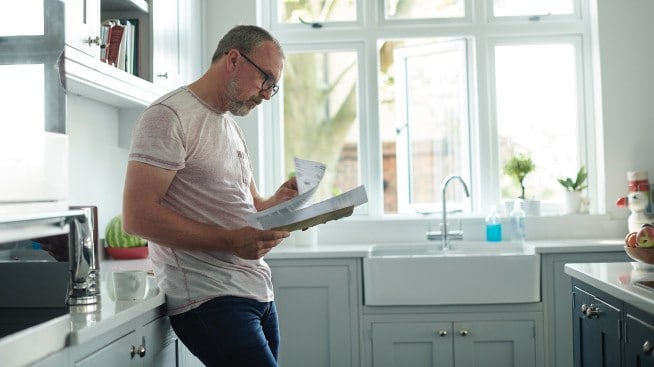5 things to know about home downsizing

Presented by Chase Home Lending, this article is part of "The Evolution of Homebuying," a new Chase series that showcases industry insights and evolving trends to support your home buying experience.
Moving from a spacious house to a smaller home can be overwhelming. But it has its upsides. For Welmoed Sisson, 57, and her husband, the experience has been rewarding.
"Between the smaller house, less stuff and better financial security, it feels like the weight of the world has been lifted from our shoulders," says Welmoed, who lives in Frederick, Maryland.
Downsizing—moving to a less expensive home, not just a smaller one—is a decision many middle-aged people will face. In many ways, downsizing isn't a new concept: For years, 50- and 60-somethings have been trading their sprawling homes in the suburbs of Chicago, Boston and Atlanta for downtown condos.
But according to a survey by the Demand Institute, a New York-based think tank that focuses on how consumer demand is evolving, 54 percent of baby boomer households plan to downsize. While some boomers will downsize to condos or apartments, most surveyed say they would seek single-family homes.
Here are five key financial factors to consider when downsizing:
1. Reduce debt
"As you approach retirement, you want to have your debt-to-asset ratio at zero," says Mandi Moynihan, a certified financial planner with Pauley Financial in Austin, Texas. "The goal is to eliminate debt, and ideally have your mortgage paid off, too," she explains, adding: "Minimizing your monthly obligations in retirement is the objective."
The Sissons' goal was to pay off debts. "That was the primary driver," says Welmoed, adding: "We wanted to reduce the debt load and have more fun living as opposed to being limited by the house."
2. Increase income
Downsizing can reduce expenses and free up income needed to pay for taxes, insurance, upkeep and utility bills, according to Boston College's Center for Retirement Research. Living off the additional cash flow can also help you delay collecting Social Security benefits as a source of income.
Moynihan recommends developing an investment strategy to provide income. She gives an example of selling your current home with a net takeaway of $500,000.
"If you downsize and buy a $300,000 home with cash, then you are mortgage-free, but keep in mind you still have property taxes and insurance that you have to factor in to cash flow," Moynihan says, noting: "That will continue as long as you own the home."
If you are retired and need to supplement your income, she suggests using the additional proceeds for that reason.
3. Invest proceeds
The Sissons, who own a home inspection company, bought their home with sale proceeds, eliminated debt and put the remainder of funds in an investment account.
Lorri Antosz Benson, 61, and her husband, took an unorthodox approach to downsizing. They used their sale proceeds toward a large-scale renovation of their new home. The empty nesters moved from a five-bedroom, 4200-square-foot home in Naples, Florida to a rundown 1,600-square-foot beach cottage in Santa Monica, California, after Steve accepted a job in the area.
The high cost of living in Santa Monica, compared with Naples, solidified their decision to downsize.
"Our financial considerations went out the window because we wanted to stay in a beach community," explains Lorri, adding: "We took the bungalow down to the studs and built a brand new home. The good news is that our small beach cottage is now worth double what our big family home was worth."
Lorri, an author and writer, also blogs on empty-nester issues. She and her husband believe the significant financial outlay was worth the effort of creating a house more suited to their long-term goals.
"It's our dream house," she says. "It's exactly what we wanted at this stage in our life. We got our beach cottage."
4. Reduce maintenance costs
Moving to a smaller house typically means less maintenance and upkeep.
Built in 1942, the Sissons' former home in a suburb of Washington, D.C., was a burden to maintain. The 7,000-square-foot home on six acres was drafty and fueled by oil. Solar panels helped cut electricity costs, but monthly utility expenses were still high.
"Everywhere I turned, there was something that needed to be done, something that needed maintenance, something to be upgraded," says Welmoed. Cutting the lawn, for instance, was a four-hour ordeal, even with a riding lawn mower.
"It takes me 20 minutes to mow the yard with a push mower where we are now," Welmoed says.
5. Prioritize goals
Moynihan cautions against doing anything impulsive with a financial windfall. She encourages would-be downsizers to identify financial goals and set priorities.
"Having a plan in place will help you make better decisions along the way," she says.



